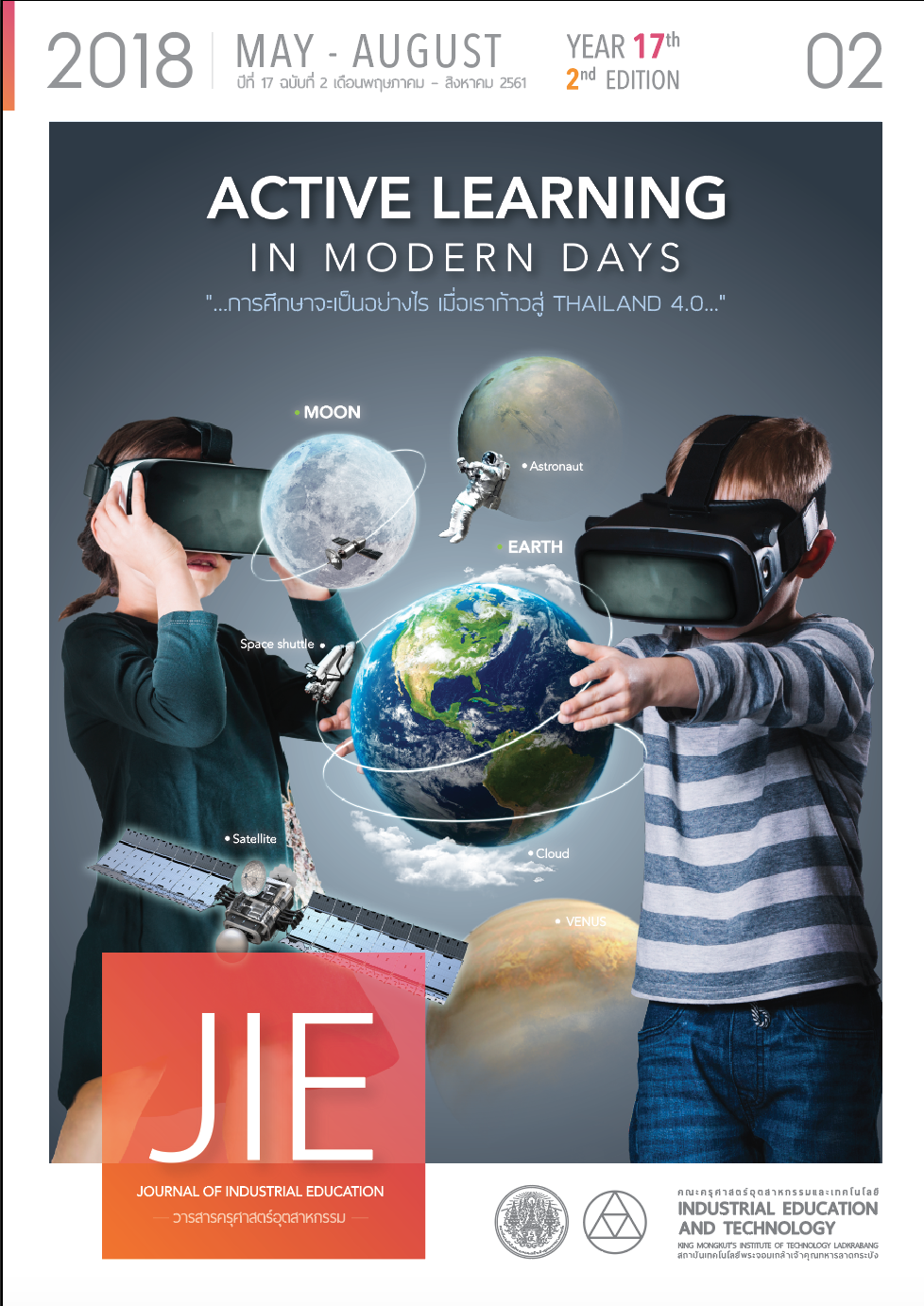การประยุกต์แนวคิด Human Error (ฮูแมน เออร์เร่อ) สำหรับการออกแบบเพื่อต่อประกอบง่ายในงานเฟอร์นิเจอร์
คำสำคัญ:
ระนาบ, รูปทรงปิด, รูปทรงเปิดบทคัดย่อ
แนวคิด Human Error ถูกสร้างขึ้นมาเพื่อลดความผิดพลาดของผู้ใช้งานที่มีต่อผลิตภัณฑ์ โดยเป็นการศึกษาถึงพฤติกรรมผู้ใช้งาน และสร้างการทดลอง เพื่อนำไปสู่การหาสาเหตุของข้อผิดพลาดไม่ให้เกิดซ้ำจากพฤติกรรมที่ไม่พึงประสงค์ของผู้ใช้ โดยในบทความนี้จะแสดงถึงการศึกษาแนวทางการต่อประกอบเฟอร์นิเจอร์ รวมถึงการออกแบบหุ่นจำลองสามรูปแบบจากความสัมพันธ์ของ ระนาบ รูปทรงปิด และรูปทรงเปิด ผลการศึกษาจากผู้ต่อประกอบจำนวน 25 คนพบว่าหุ่นจำลองที่มีความสัมพันธ์ของรูปทรงปิดกับรูปทรงเปิดเป็นหุ่นจำลองที่ต่อประกอบได้ยากที่สุด เนื่องจากการขาดสัญลักษณ์ที่จะทำให้ผู้ต่อประกอบเข้าใจถึงการจับคู่ชิ้นส่วนที่ถูกต้องและเข้าใจวิธีการต่อประกอบในขั้นตอนถัดไป
เอกสารอ้างอิง
[2] Saributr,A., Louhapensang,C. and Seviset,S.2015. Study and Development of the Industry-Crafts, Wooden Furniture. Journal of Industrial Education, 14(3), p.360-367.
[3] How One Furniture Company Tested Self-Assembly Messaging To Enhance Value And Reduce Frustration. 2016. Retrieved from https://marketin gexperiments.com/value-proposition/customer-coproduction
[4] Woods, D. D. 1994. State-of-the-Art Report Behind Human Error: Cognitive Systems,
Computers, and Hindsight. CSERIAC Program Office AL/CFH/CSERIAC Bldg 248 2255
H Street Wright-Patterson. USA.
[5] Tversky, B., Agrawala, M., et al. 2006. Cognitive Design Principles: from Cognitive Models to Computer Models. Model-Based Reasoning in Science and Engineering, p. 1–20.
[6] Strobel, J., & Zimmerman, G. W. 2011. Effectiveness of Paper, VR and Stereo-VR in the Delivery of Instructions for Assembly Tasks. International Journal of Computer Information Systems and Industrial Management Applications: ISSN 2150-7988, 3, p. 578-585.
[7] Richardson, M., Jones, G. and Torrance, M. 2004. Identifying the task variables that influence perceived object assembly complexity. Ergonomics, 47, p. 945–964.
[8] Wongwichai,T., Tanaka,T. 2015. An Observation of Human Comprehension through Wood Joint Assembly of a Cube Puzzle. Human Interface and the Management of Information. Information and Knowledge Design, 9172, p. 668-677.
[9] Wongwichai,T., Tanaka,T. 2016. Investigating affecting the difficulty in assembling a joint of a cube puzzle. Bulletin of Japanese Society for the Science of Design, 63(4), p. 49-58.
[10] Norman,D.A. 2013. The Design of Everyday Things. New York, Basic Books, London : MIT Press (UK edition)
ดาวน์โหลด
เผยแพร่แล้ว
รูปแบบการอ้างอิง
ฉบับ
ประเภทบทความ
สัญญาอนุญาต
"ข้อคิดเห็น เนื้อหา รวมทั้งการใช้ภาษาในบทความถือเป็นความรับผิดชอบของผู้เขียน"



